
powerpoint for second unit in cinema scenes film history book chapters 8 through 13
- Subject:
- Arts and Humanities
- Material Type:
- Lecture Notes
- Author:
- daniels
- lenig
- mccready
- sherrill
- broadbent
- Date Added:
- 07/16/2022

powerpoint for second unit in cinema scenes film history book chapters 8 through 13
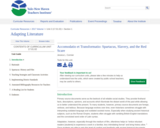
Primary source documents serve as the bedrock of all reliable social studies. They provide firsthand facts, descriptions, opinions, and accounts which illuminate the distant world of the past while allowing us to better understand the present. To many students, however, primary source documents are foreign, verbose, and tedious.
In order to reach out to these students, a history teacher’s best weapon is often adaptation, especially through the medium of film. Passionate actors, perceptive directors, witty screenwriters, and elaborate costumes bring dusty historical documents back to life through an immersive audiovisual experience.
Yet with a bit of inspection, these cinematic adaptations of history can reveal much more than secondary historical details. By analyzing these films as primary source documents themselves, audiences can gain insight into the time period in which the movies were made.
This curriculum unit considers the story of Spartacus—the celebrated hero of ancient history and the 1960 film directed by Stanley Kubrick—as both a primary and secondary source of history. How does Spartacus compare to the ancient sources recorded before the common era? And how does Spartacus reveal the political and social turmoil which afflicted the United States throughout the 1950’s and 1960’s?

This course considers films spanning the entire career of pioneering Spanish filmmaker Luis Buñuel (1900–1983), from his silent surrealist classic of 1929, Un perro andaluz, to his last film, Ese oscuro objeto del deseo (1977). We pay special attention to his Mexican period, in exile, and the films he made in, and about, Spain, including his work in documentary. It explores Buñuel's early friendship with painter Salvador Dalí and poet Federico García Lorca, surrealist aesthetics, the influence of Freud's ideas on dreams and sexuality, and the director's corrosive criticism of bourgeois society and the Catholic church. We will focus on historical contexts and relevant film criticism.
About This Course on OpenCourseWare
The instructor of this course, Elizabeth Garrels, is a Professor Emeritus at MIT. She retired in 2014 after 35 years at the Institute. Professor Garrels taught this course for over 15 years, and it evolved over this time period. Normally, a course on OCW represents the version of a course taught during a specific semester and year. However, for this course we hope to represent the evolution of the course during the main years it was taught. The materials you see here are not from a particular iteration of the course, but are drawn from all of the years the course was taught.

Sometime after 1492, the concept of the New World or America came into being, and this concept appeared differently - as an experience or an idea - for different people and in different places. This semester, we will read three groups of texts: first, participant accounts of contact between native Americans and French or English speaking Europeans, both in North America and in the Caribbean and Brazil; second, transformations of these documents into literary works by contemporaries; third, modern texts which take these earlier materials as a point of departure for rethinking the experience and aftermath of contact. The reading will allow us to compare perspectives across time and space, across the cultural geographies of religion, nation and ethnicity, and finally across a range of genres - reports, captivity narratives, essays, novels, poetry, drama, and film. Some of the earlier authors we will read are Michel Montaigne, William Shakespeare, Jean de Léry, Daniel Defoe and Mary Rowlandson; more recent authors include Derek Walcott, and J. M. Coetzee.
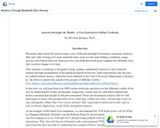
Historians learn about the past in many ways. Political and legal documents, economic statistics, film and video footage of events, material items such as tools and clothing, literature, songs, movies: all of these leftovers from previous eras help historians piece together the different ways that societies change over time. This interactive textbook is designed to help students understand America in the twentieth century through examination of the media produced in that era. Such explorations into the past are called cultural history, which has been defined by the Yale University Department of History as “an effort to inhabit the minds of the people of different worlds.”

Kirsten Lepore is an artist and filmmaker who works with different animation techniques, including stop-motion animation and claymation. With these videos, learn more about the intentions behind her food-focused film, the unusual materials she works with to create her projects, and why she loves the laborious process of stop-motion animation. Lepore also demonstrates the basics of shooting a stop-motion animation film.

Learn about actress Anna May Wong—the first Chinese American Hollywood movie star, producer and one of the most influential style icons of her time, in this resource from Unladylike2020. Throughout Wong’s career, she encountered racism and stereotyping in the roles she was offered, but in the end she found a way to flourish as an actor on her own terms starring in 60 films. Using video, discussion questions, vocabulary, teaching tips, and an in-class activity, students learn about Wong’s place in Hollywood history and how she was impacted by important events in American history, like the Chinese Exclusion Act of 1882 and anti-miscegenation laws.
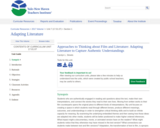
Students who are authentically engaged in reading ask questions about the text, make their own interpretations, and connect the stories they read to their own lives. Moving from written works to their film counterparts opens the original piece to different kinds of interpretations. My unit focuses on creating a space in which students read through different lenses, produce different meanings, outcomes, and understandings in order to strengthen critical thinking skills and to build an infinite capacity for meaning. By examining the underlying embedded themes and then seeing how those ideas are adapted into other media, students will be better positioned to make higher ordered inferences. What impact might a documentary, movie, or animated version have on the readers? What might students notice that they otherwise may have missed in the text version? What connections can students make between text and film versions? Adaptation, the transformation of text to film, is apropos to this unit tentatively titled Adapting Literature to Capture Authentic Understandings as it seeks to present strategies to help students use select literary devices in order to help them understand implied universal themes.

Becoming the Next Bill Nye is about using video production techniques to develop your ability to engagingly convey your passions for science, technology, engineering, and / or math. You'll have the opportunity to script and on-screen host 5-minute YouTube science, technology, engineering, and / or math-related shows to inspire youth to consider a future in science.

Create giant bubbles! Bubbles are fascinating. What gives them their shape? What makes them break or last? What causes the colors and patterns in the soap film, and why do they change?

Cinema scenes film textbook.

film history text pdf version july 2022

film textbook

film textbook
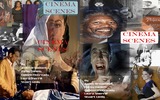
a recent revision of the film text
the revised text has altered margins deemed more helpful for printing the text....
fourth Amazon revision for printing
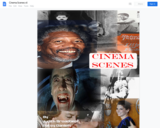
a textbook on the history of film

This resources is a listing of materials that may potentially be used within a variety of lessons related to The Cold War
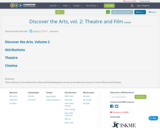
This is Volume 2 of a textbook for a Fine and Performing Arts survey, an introductory course. It covers Theatre and Cinema.
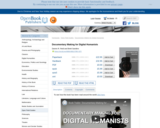
This fluent and comprehensive field guide responds to increased interest, across the humanities, in the ways in which digital technologies can disrupt and open up new research and pedagogical avenues. It is designed to help scholars and students engage with their subjects using an audio-visual grammar, and to allow readers to efficiently gain the technical and theoretical skills necessary to create and disseminate their own trans-media projects.

The 12th grade learning experience consists of 7 mostly month-long units aligned to the Common Core State Standards, with available course material for teachers and students easily accessible online. Over the course of the year there is a steady progression in text complexity levels, sophistication of writing tasks, speaking and listening activities, and increased opportunities for independent and collaborative work. Rubrics and student models accompany many writing assignments.Throughout the 12th grade year, in addition to the Common Read texts that the whole class reads together, students each select an Independent Reading book and engage with peers in group Book Talks. Language study is embedded in every 12th grade unit as students use annotation to closely review aspects of each text. Teacher resources provide additional materials to support each unit.